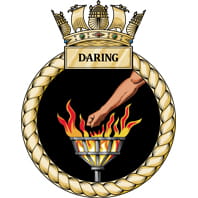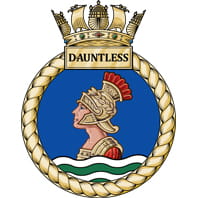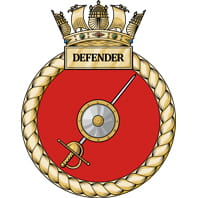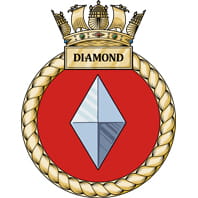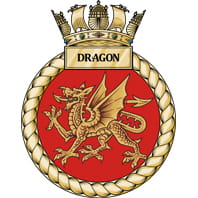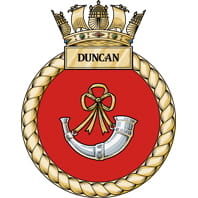equipment / SHIPS
Daring Class
From combating pirates and defending air attacks, to delivering humanitarian aid, these high-tech Type 45 destroyers are the pride of the naval fleet.
Daring Class destroyer
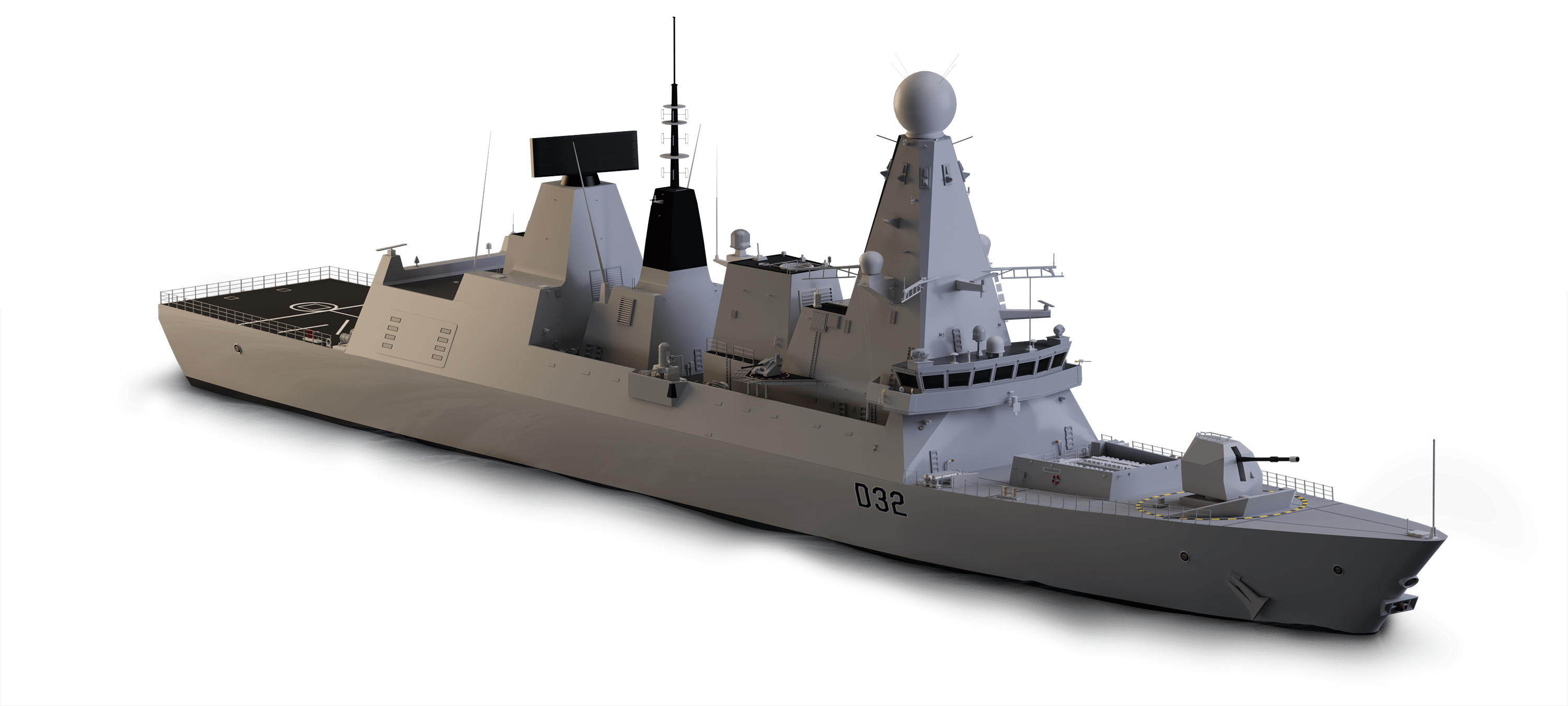
Displacement
7,350 tonnes
Length
152 metres
Speed
30 knots
Range
7,000 nautical miles
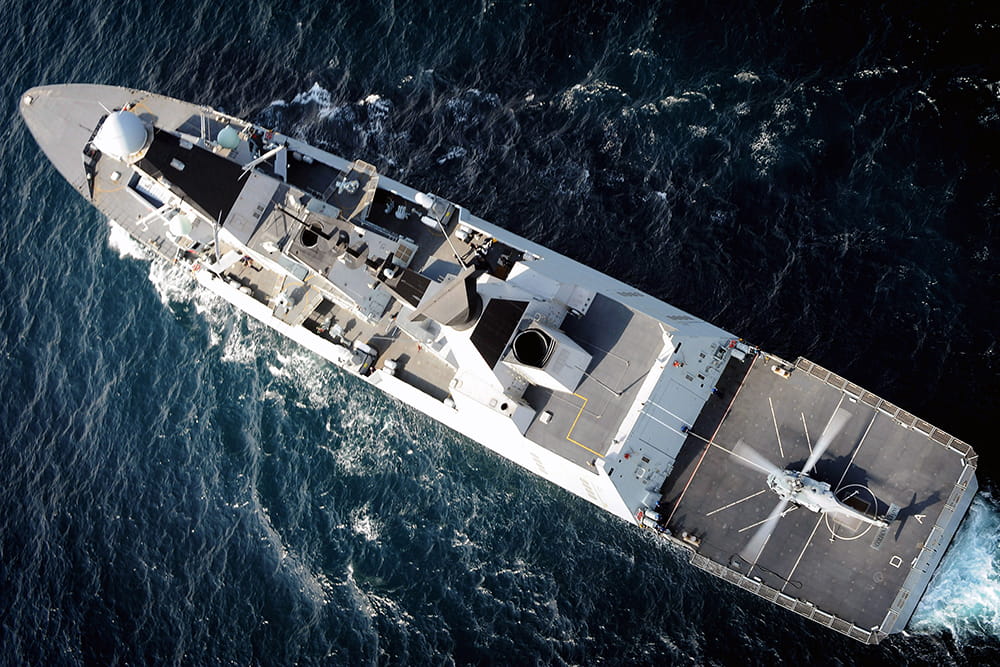
Built for combat
The Daring class consists of six Type 45 destroyers (HMS Daring, Dauntless, Diamond, Dragon, Defender and Duncan) that were purpose built for anti-aircraft and anti-missile warfare. The destroyers all feature a ‘clean’ exterior superstructure thanks to their deck equipment and life rafts being concealed behind panels.
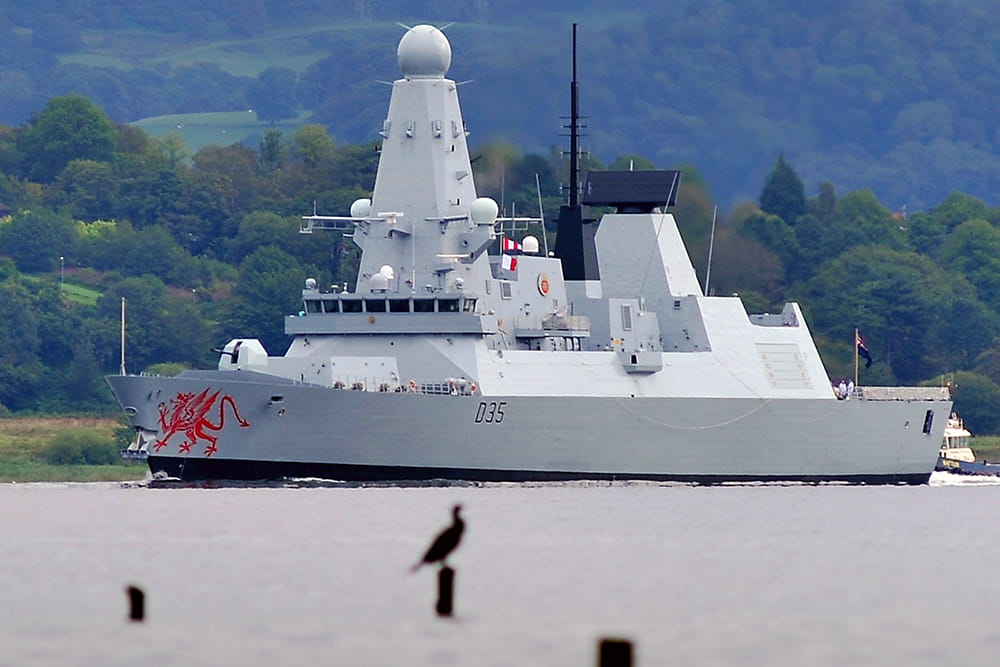
Total awareness
The Type 45 destroyers are fitted with a Fully Integrated Communications System (FICS45), which provides voice, intercom, data links and conference calls – both internally and externally. This comms suite also includes a Meteorology and Oceanography (METOC) system for total awareness of the ship’s surroundings.
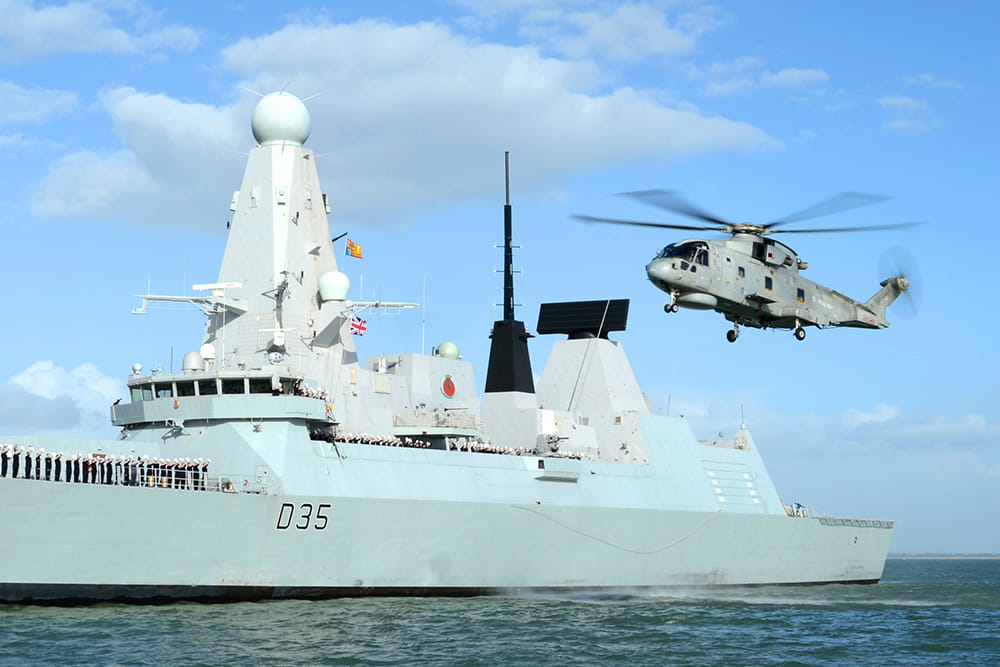
Ruling the sea and skies
The Type 45 destroyers feature a flight deck and hangar to support the operation of a single Merlin helicopter. As well as hunting and obliterating enemy submarines, the Merlins can also be used for round-the-clock maritime patrol and interdiction, casualty evacuation and search and rescue missions.
About the crew
During a nine-month deployment, the 260 sailors on board the HMS Daring consumed 75,600 eggs, 19,000kg of potatoes and 54,720 sausages – which would cover three miles if laid end to end.
The ultimate seaborne deterrent
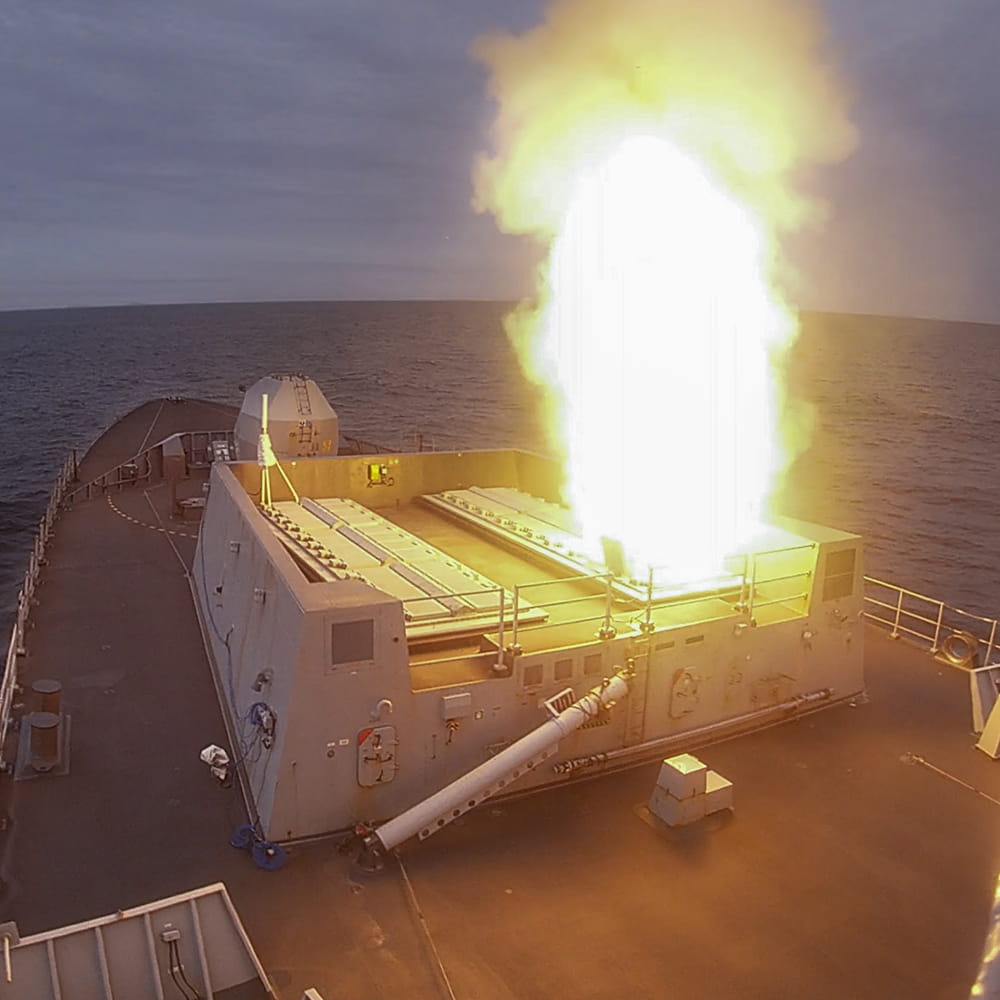
Defend
Striking with venom
The Sea Viper missile system can target and destroy multiple targets simultaneously
Designed to protect both land and sea forces from aircraft attacks and defend the naval fleet against supersonic anti-ship missiles, Sea Viper is the principle weapon system of the Daring Class of destroyers.
Comprising of long-range and missile-directing radars, a combat control centre and vertical missile silos, Sea Viper can launch eight missiles in under ten seconds and guide up to 16 missiles simultaneously.
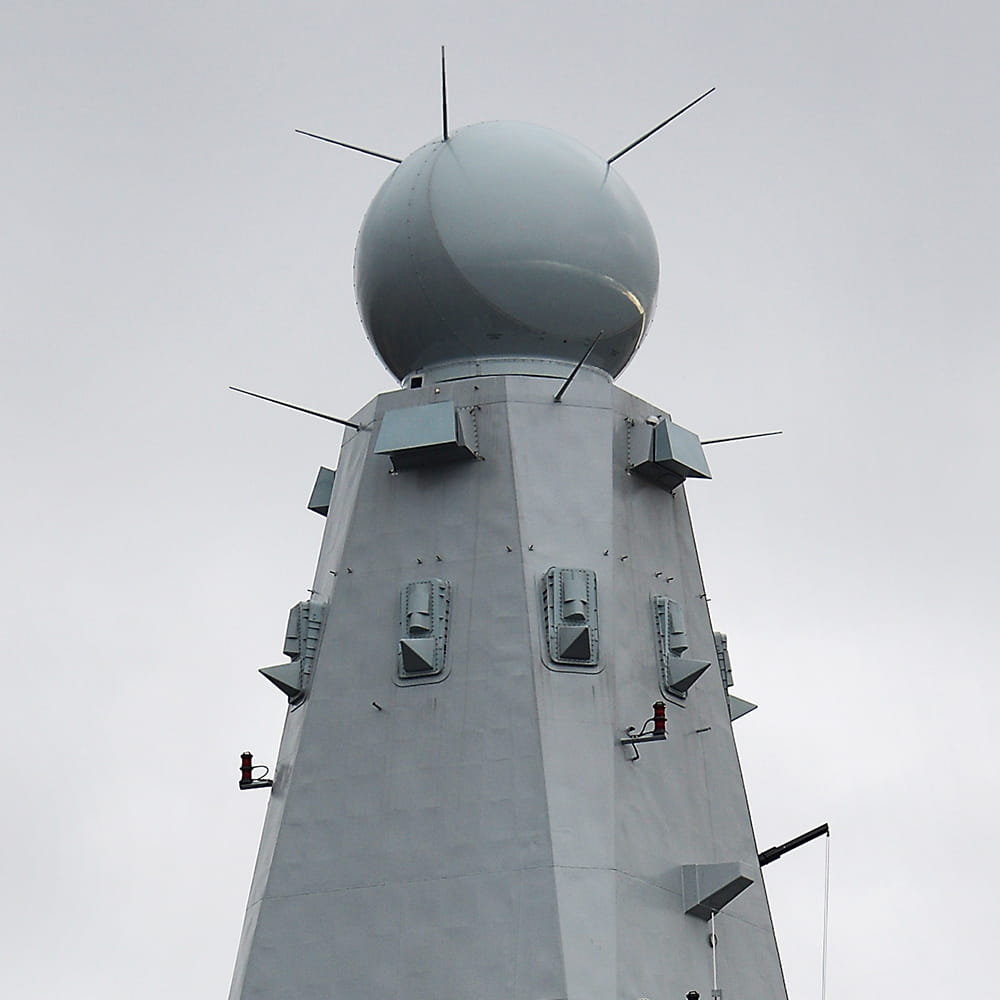
Observe
The all-seeing eye
The SAMPSON radar system can detect threats from great distances
Type 45 destroyers are easily identifiable by the SAMPSON radar system – a large, spherical surveillance device that can detect and track threats from over 250 miles away, as well as guide friendly missiles.
Unlike conventional radars, SAMPSON can perform several functions at once, has immense range and accuracy and, through its adaptive waveform control, is immune to enemy jamming.
Units and squadrons
Discover the global operations and base of the Royal Navy ship units. Track our missions, explore facts and figures, and check our current and past deployment locations.
Join the Surface Fleet
Ready to go places? A career in the Surface Fleet could take you all over the world - on missions as varied as the oceans we defend.
